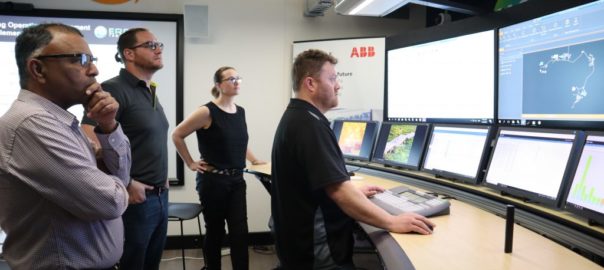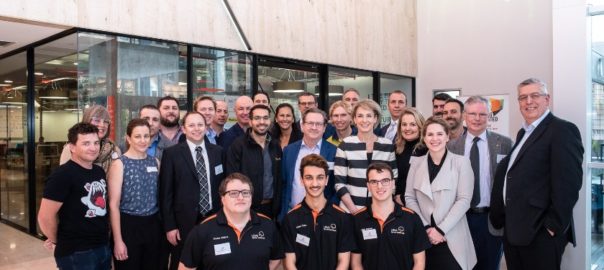Independent global not for profit organisation, Amira, says its global members are set to reap significant benefits from the finalisation of the Industry 4.0 interoperability project P1208 undertaken in Perth, Western Australia.
The Interoperability Enablement for Natural Resources project concluded in November and was sponsored by miners South32, Fortescue Metals Group and Gold Fields Australia.
The Amira project, which was conducted at the University of Western Australia’s Energy & Resources Digital Interoperability Industry 4.0 (UWA ERDi I4.0) TestLab, was designed to realise “the digital mine”, which requires mature interoperability standards to improve information flow.
The project ran multiple proofs-of-concept using interoperability standards (ISA-95/IEC 62264 and B2MML v7.0 (plus process centric event extensions)) that were originally developed to support the manufacturing industry.
These standards had benefited from many years of work (originally with contributions from BHP and continued by ETP and vendors such as RPMGlobal) in enhancing the standards to support mining requirements.
The resulting updated standards were used in P1208 as a means of exchanging information between common mining software packages from Datamine, ABB, AVEVA, RPMGlobal, Wenco and Manufacturing Intelligence. Each of these vendors played a critical part in the project’s success, according to Amira.
Managing Director at Enterprise Transformation Partners (ETP) and the P1208 Project Lead, John Kirkman, said the project was highly successful, demonstrating manufacturing standards could be adapted and used across various mining methods and commodities.
“In terms of benefits, miners should first note ‘interoperability’ is simply a means to an end, with that end being optimal management of their operations,” Kirkman said.
“By enhancing the core specialist software packages used by geologists, mine planners, mine execution/control, materials tracking and maintenance personnel, etc to work together as if they were always engineered to do so, you are thereby implementing the cornerstone of automating and optimising the processes used to manage your mining operations.
“This is just one of the reasons why interoperability is one of only three core pillars of the Industry 4.0 vision as the idea of achieving highly automated and optimised operations without interoperability is simply not viable.
“Industry 4.0 also recognise ISA-95/IEC 62264 as the standard for supporting modular operations management interoperability, while also recognising OPC-UA as the standard for level 2 (machine/process control) interoperability.”
Benefits of Industry 4.0
Kirkman said Industry 4.0 solutions remove a significant amount of manual effort that are currently an accepted part of the mining process.
“This, in turn, increases data quality by eliminating manual entry errors and aligning semantics, improves timeliness of access to new information and enables users to spend more of their time on the quality of their work,” he said.
“This enables the automated capabilities of the software packages to be fully utilised and opens opportunities for the vendors to develop additional high value automated decision support capabilities within their software packages.”
During the course of the P1208 project, this was most clearly and broadly demonstrated via the materials inventory tracking/management software packages, which were able to automatically receive material movement events (from fleet management systems and fixed plant) and material sample analysis results events (from a Lab Information Management System) and update block and stockpile quantities and grade, then send the updated block and stockpile quantities and grade to a mine planning software packages and data warehouse, all without any user intervention.
“With respect to major successes, the fact that we have been able to demonstrate that standards exist that are able to be applied to mining software packages that can exchange information regardless of what commodity you are mining, by whatever mining method, using whatever equipment, whether you are an open pit or underground mine and also supporting multiple areas of the value chain (ie geology, drilling, blasting, mining, processing, railing, port and shipping) is significant,” Kirkman said.
“With P1208, we have successfully demonstrated that standards do exist and that they can be applied to mining with great success and that miners can now begin to include the application of interoperability in their improvement/transformation strategies and, as a result, maximise their return on investment from future technology projects.”
Interoperability in action
Kirkman said this was exciting news for mining companies looking to make technology investments that have a much higher likelihood of achieving a meaningful return on investment.
Project sponsor Gold Fields Australia took part in the AMIRA P1208 demonstrations sessions at the UWA ERDi I4.0 TestLab in Perth, Australia, recently, examining how interoperability in the mine plan, scheduling, execution, and materials and tracking functions can improve performance.
One of the sponsors said: “I don’t think many mining companies really appreciate the magnitude of the inefficiencies and lost opportunities that exist in a typical mine as a result of systems not working together; I think it’s almost just accepted as we have no other choice today.
“The Amira project has really shone a light on this area and demonstrated how interoperability can significantly improve the way of working across the business.
“To witness schedules being published from one vendor’s software and being received by multiple other vendors’ software, and the same again with actuals and inventory balance updates in real-time, is quite exciting and even more so when you consider that none of the vendors worked directly together; they just applied the standard interfaces to their software under the guidance of the ETP/ERDi team and it all works.”
The ETP team and various vendors involved in P1208 are already implementing these solutions into an open-pit and an underground mine further validating the work, with case studies likely to be produced through 2022.
The ERDi TestLab has noted a recent uptick in interest from both Australia-based and overseas mining companies, which bodes well for the vendors whom can now take advantage of their investment in interoperable solutions.
The ERDi team has already commenced work to extend these solutions across asset management and maintenance, fleet management/autonomous haulage solutions to machines and open process control interoperability via integration of OPAS-based solutions from the Coalition of Open Process Automation (COPA), who have together built the world’s first commercially available OPAS-based control system.
Project findings
Some of the key findings from the project include:
- There were no instances of an information type required by the end customer or other systems not already catered for by the B2MML v7.0 + process centric events schemas;
- All vendors were able to enhance their software to support the standards successfully;
- Software performance would likely be the limiting factor in how much data could be exchanged, not the standard itself, which can be addressed by vendors through various approaches;
- That being able to receive accurate, real-time information from other systems exposed opportunities for vendors to implement new and advanced features that would not have been useful in a manually updated solution;
- Though the standard supported all requirements and was able to be implemented by vendors, a number of areas were identified in which the standard could be improved to make it much easier for vendors to implement, maintain and update over time as well ensure it is sufficiently explicit to certify products. ERDi has already kicked off work to address these improvement opportunities;
- Education is likely the greatest barrier to adoption today. As these Industry 4.0 approaches and opportunities are not yet commonplace in the mining industry, miners will need to make an investment in upskilling their workforce to be able to successfully implement and take advantage of these solutions. Industry 4.0 education and workforce enablement has also been identified by platform I4.0 and the world economic forum as major factors in successful industry 4.0 adoption; and
- It is possible to establish standards management and governance processes to enable more rapid and frequent update of standards.








